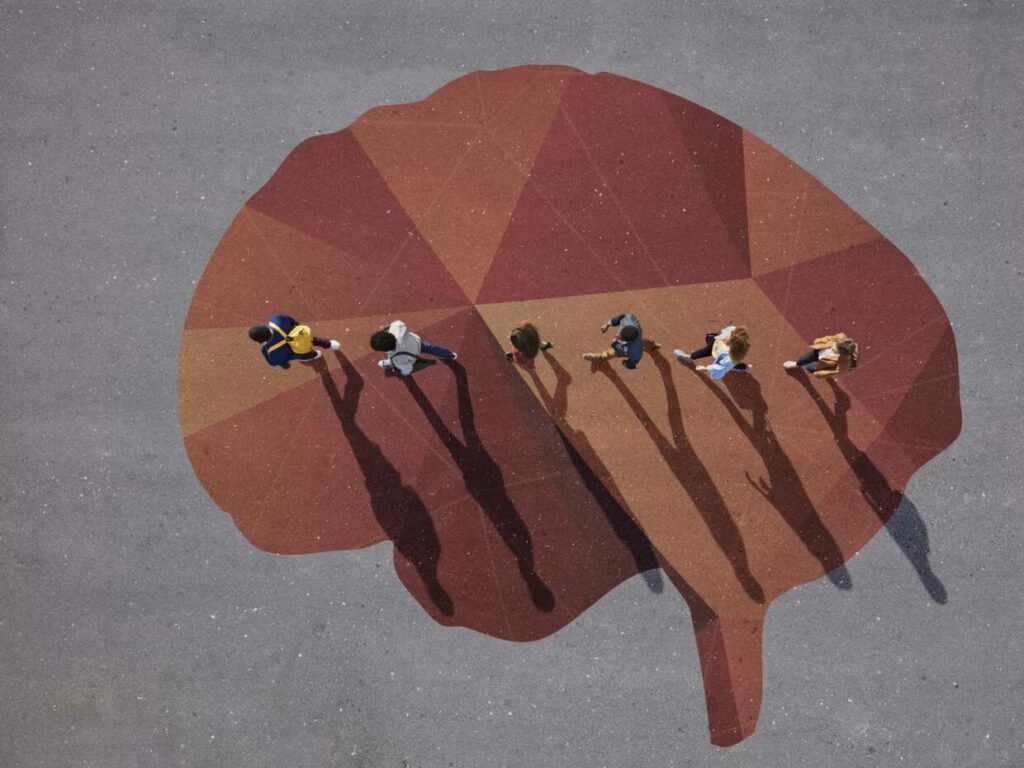Insights and Frequently Asked questions on Neurodiversity
ARTICLES

Living together through neurodiversity
Sabrina Menasria shows how recognizing neurodiversity fosters living together and strengthens cohesion within teams and work environments.
Published in: Opinion Internationale –
September 27, 2024

Mad skills: these overlooked but strategic skills in the workplace
A reflection on how atypical skills are becoming key assets in a professional world undergoing deep transformation.
Published in Harvard Business Review
May 21, 2024

Gifted women: what are their characteristics?
The article highlights the characteristics of gifted women and the specific challenges they face in their professional and personal journeys.
Published in Harvard Business Review
May 16, 2023
FAQ
- If you struggle in your everyday work, I’d recommend to share your neurodivergence so you can benefit from adjustments/accommodations and maybe ask for a disability recognition.
- If your working conditions are fine for you, then I’d recommend to explain first your operating mode because labels can be perceived with stereotypes when people are not trained. Give them the « user guide » so they can understand you better. This is a good exercise for you to develop self awareness. And even if you tell them that you’re autistic for instance, they won’t be able to understand what it means in the everyday collaboration. But if you explain that it’s difficult for you to read the emotions, understand the implicit, and what is not said clearly, you are giving them a direct key to understand some of your behaviors and be more explicit on their side.
- If you see the benefits of this approach, and the psychological space is safe, then you may want to share it with them.
- Unfortunately, there’s still a lot of stereotypes and misbelief about neurodivergent people. There are few recruiters who know about their mad skills and who are trained on neurodiversity. The chances of not being selected are sadly still very high, so I would recommend sharing it in a second time during the interview and only if you are officially recognized as disabled and/or need specific accommodations.
- In the cover letter, I would recommend describing your operating mode, what you do well (TSA/ASD: I have a deep sense of detail that allows me to see anomalies in every process – TDAH/ADHD: I am very good at managing crises and I have a very high reactivity, etc.). You may be able to express your effort zones during the interview and see if the organization is sensitive to that.
- It’s a broad subject. First, it is important to offer options, starting from the job description to the interview process.
- Avoid corporate vocabulary and buzzwords, train the recruiters to read the mad skills in a non-conventional CV and not reject atypical ones (neurodivergent often have non-linear career paths so they may not even pass the CV selection because of this). For autistic people, offer to send the questions in advance and receive written answers.
- Offer alternatives to the ‘classical’ interview (assess the skillset in action with use cases, simulations). Neurodivergent people are often better at know-how and not very good at communication (especially people on the autistic spectrum) and struggle with self-promotion.
- Sometimes, neurodivergent people don’t realize that the way they work can affect or disturb others and don’t activate the double empathy. Expressing how the situation affects you personally, without accusing, allows them to realize the impact of some of their behaviors. Speak from your perspective, express the impact on your work without judging. You can use the Non-violent Communication approach (Marshall Rosenberg – observe-feeling-need-request).
- A small tip: involve the neurodivergent in finding a solution (for instance: “What do you think could be done to solve this?”) – as they love finding solutions, they will put their intensity on the solution and less on the emotional reaction!
Are there any indicators or tools to assess a company's inclusiveness with regard to neurodiversity?
- There are some audits that can be done to assess if the company is neuroinclusive. The audits can be done globally or on specific aspects (working environment, processes, recruitment, culture).
- Regarding the indicators, some of them can fall under the category of CSRD regulation – Social Domain (e.g.: equal treatment and opportunities for all, working conditions…).
- E.g.: % of managers trained on neuroinclusive leadership, number of actions and population reached, number of accommodations granted, employee satisfaction (depending on the local regulations on sensitive data and GDPR regarding the identification of neurodivergent people).
- Definitely yes! Their mad skills are extremely relevant to lead people and find solutions towards a better future for all. Unfortunately, politics can be a hostile place for neurodivergent people, the social and political codes being very difficult to handle. There’s been an attempt from a school in India to train neurodivergent kids for a political career, but they stopped the program because they were emotionally overwhelmed and didn’t manage to navigate in the political world. Maybe things will be different in the future 🙂
- I think it’s always a good thing to share our difficulties, for one reason: it avoids putting too much energy on “masking”, because hiding has a high energy cost and can be really stressful (fear of being discovered…). The solution may rely in the way we express these difficulties, knowing that it’s not mandatory to share your neurotype. There are some approaches like “Non-violent Communication” that work well. Here’s an example: “I am very straightforward when I write, because this is how my rational brain works. So it may be difficult for me to integrate some social codes and I may hurt people without expecting it. As a solution to this, I use AI to support me in being more diplomatic. I thought it was important for me to share it with you.”
- In any case, ensure you feel comfortable to say it; the environment should be able to receive what you have to say. In my experience, I noticed that sharing vulnerabilities moves people who then can become more helpful and supportive.
- There can be many answers to this question. The lunch break or the afterwork events raise two issues for neurodivergent people: the sensorial and social ones.
- For lunch, if the cafeteria is noisy and doesn’t offer quiet, isolated places, one solution is to adjust the opening hours (for instance from 11:30 to 14:30) to allow neurodivergent people to eat earlier or later, or allowing them to have lunch in meeting rooms (some already book meeting rooms for that). It’s also a good thing to invite a neurodivergent person for lunch (because it may be difficult for them to ask), but ensure not to be upset if the person refuses…
- For afterwork events, it’s a bit more complicated because they’re often noisy and crowded. One accommodation would be to allow them to wear noise-cancelling headphones, for instance. But generally, they don’t feel comfortable in afterworks because they don’t like small talk and don’t know what to say. The best approach is for them to go with someone they know/trust or have a resource person they can speak with.
- Neuroinclusive design of workspaces can take time and be costly when not embedded in the building setup. So an agile approach for adjustments could be: offer noise-cancelling headphones, place plants or other elements to separate spaces and better isolate desks. If there’s no quiet room defined to isolate from noise and crowds, a meeting room can be repurposed as a “quiet place” with defined and written rules. Some lights can also provoke important headaches for certain populations (ASD), so it’s good to ensure a neurodivergent person is not sitting in front of intense lamps or spotlights. And of course, home office is a good solution to this.
